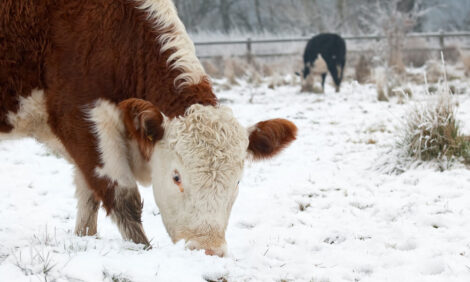



Cattlemen Voice Concerns on Rising Feed Costs
WASHINGTON - As corn prices rise due to increased demand, livestock producers across the country are hurting and struggling to find reliable and affordable sources of animal feed. Ernie Morales, a cattle feeder and rancher from southwest Texas told members of Congress today how cattle producers are trying to deal with impacts of drought, wildfires, winter storms, transportation challenges, shortage of hay and forage, and soaring corn prices.The House Agriculture Subcommittee on Livestock, Dairy, and Poultry held the hearing today to review the impact of feed costs on the livestock industry. Morales testified on behalf of the National Cattlemen’s Beef Association (NCBA) and Texas Cattle Feeders Association. Morales owns and operates a feedyard in Devine, Texas, and also runs a stocker operation.
Of all the challenges currently facing U.S. cattlemen, rising corn prices due to increased demand for corn-based ethanol is top of mind. For cattle feeders, corn is the primary feed stock, accounting for about 85 of every 100 pounds of cattle feed.
“The livestock industry remains the largest consumer of corn by utilizing almost 58 percent of the total corn used over the past decade,” says Morales. “In the past year alone, cattle feeders have seen a 92 percent increase in cash corn prices." (January-February 2007 price of $3.68 per bushel, compared to $1.91 per bushel in 2006.)
Morales points to figures by the Renewable Fuels Association that put current U.S. ethanol production at 5.6 billion gallons with another 6.2 billion gallons currently under construction. “There are currently 114 biorefineries in production, with another 78 under construction,” says Morales. “When fully operational, this will require roughly 4.25 billion bushels of corn.”
Morales says in time U.S. corn producers can and will meet this rapidly expanding additional demand. “However, until the appropriate acreage and yield adjustments can be made during this transition, USDA’s current projection of a 50 percent year-to-year increase in ethanol-based corn demand from 2.15 to 3.2 billion bushels will be felt squarely in the wallets of every feeder and cow-calf producer in this country,” says Morales.
Cattle producers are looking to alternative feed sources such as distillers grains, a co-product of ethanol-based corn production. While cattle can utilize some distillers grains in feed, Morales says some cattle don’t perform as well on distillers grains as they do when fed a higher concentration of corn. In addition, distillers grains aren’t easily transportable to all cattle operations.
At NCBA’s annual meeting last month, members adopted policy calling for a transition to a market-based approach for the production and usage of ethanol produced from corn. “This means we are calling for sunsetting the existing blenders tax credit and the ethanol import tariff as scheduled in 2010 and 2009 respectively,” says Morales.
“We believe that these credits have served a valuable purpose. But at a projected annual production level of somewhere between 12 and 15 billion gallons, it is clear that this is no longer a fledgling industry.”
“We also believe that other renewable fuel sources, such as cellulosic feedstocks for ethanol, hold great promise,” says Morales. “And we continue to support the use of animal fats and oils in the production of biodiesel as we also see this as a way to decrease our energy dependence by utilizing what has traditionally been a waste product.”
As these new renewable energy technologies evolve, Morales still expects to see an extremely volatile corn market in the meantime.
“Increased volatility puts further pressure on the users of corn,” Morales says. “But we believe the U.S. beef industry can and will remain competitive as long as we have the ability to compete on a level playing field with the ethanol industry for that bushel of corn.”
TheCattleSite News Desk


